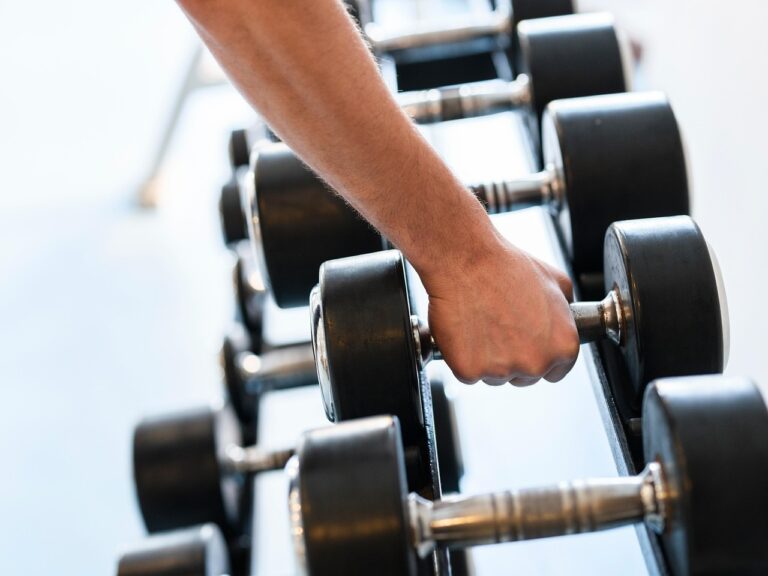Grip strength is often the limiting factor in your training—whether you’re pulling a heavy deadlift, dominating on the climbing wall, or simply opening stubborn jars with ease. Yet many athletes overlook this crucial aspect of fitness until their hands give out mid-set. The good news? Building powerful, resilient hands is more straightforward than you think, and it delivers benefits that extend far beyond the gym.
Why Grip Strength Matters More Than You Think
Your grip is the bridge between your body and nearly every movement that involves holding, lifting, or carrying. When your grip fails, everything else suffers. Powerlifters miss PRs because the bar slips. Rock climbers pump out prematurely. Even everyday tasks become unnecessarily challenging.
Research consistently shows that grip strength correlates strongly with overall health markers, including cardiovascular health and longevity. It’s not just about performance—it’s about functional fitness that serves you for life.
Understanding the Three Types of Grip
Before diving into training methods, it’s essential to understand that grip strength isn’t monolithic. There are three distinct types:
Crushing Grip
This is the force generated when you close your hand around an object, like squeezing a handshake or crushing a soda can. It’s what most people think of when they consider grip strength.
Pinch Grip
This involves holding objects between your thumb and fingers without wrapping your hand around them. Think of carrying weight plates or pinching a thick book.
Support Grip
This is your ability to maintain a hold over extended periods—crucial for deadlifts, farmer’s carries, and hanging exercises. It’s less about maximum force and more about endurance.
Proven Training Methods for Stronger Hands
Building grip strength requires targeted practice, just like any other muscle group. Here are the most effective approaches:
Dead Hangs and Farmer’s Carries
Simple but brutally effective, dead hangs from a pull-up bar develop support grip while farmer’s carries add dynamic movement. Start with 20-30 second hangs and gradually extend your time. For farmer’s carries, use heavy dumbbells or kettlebells and walk for 40-60 meters.
Thick Bar Training
Using fat grips or thick-handled bars forces your hands to work harder during every exercise. Even standard movements like rows, curls, and presses become grip-intensive when you increase the bar diameter.
Specialized Tools and Equipment
Dedicated grip strength equipment like hand grippers, wrist rollers, and grip trainers allow for progressive overload and targeted development. Hand grippers, in particular, offer measurable progression as you advance through different resistance levels—from beginner-friendly models up to competition-grade crushers that only the strongest athletes can close.
Plate Pinches and Fingertip Push-Ups
Hold weight plates smooth-side-out between your fingers and thumb for timed sets. Meanwhile, fingertip push-ups build incredible finger strength and hand stability, though they require patience and proper progression to avoid injury.
Programming Your Grip Training
Grip work doesn’t need to dominate your routine. Two to three dedicated sessions per week is sufficient for most athletes. You can integrate grip exercises at the end of your regular workouts or dedicate brief 10-15 minute sessions to focused hand training.
Start conservatively and progress gradually—the small muscles and connective tissues in your hands need time to adapt. Overtraining your grip can lead to tendonitis and setbacks that take weeks to resolve.
FAQ: Common Grip Training Questions
How long does it take to build noticeable grip strength?
Most people notice improvements within 3-4 weeks of consistent training. Significant strength gains typically appear after 8-12 weeks of dedicated practice.
Can I train grip every day?
While some light grip work daily is acceptable, intense training should be limited to 2-3 times per week to allow proper recovery and adaptation.
What if I have small hands or short fingers?
Hand size matters less than you’d think. While larger hands may have mechanical advantages in certain movements, proper training improves strength regardless of your starting anatomy. Focus on progressive overload and technique.
Do I need special equipment to get started?
Not necessarily. Dead hangs, towel pull-ups, and carrying heavy objects provide excellent grip work with minimal equipment. However, specialized tools offer more precise progression and training variety.
Will grip training help prevent injuries?
Absolutely. Stronger hands, wrists, and forearms provide better stability during pressing and pulling movements, reducing strain on your elbows and shoulders.
Conclusion: Small Muscles, Big Impact
Your grip is the foundation of nearly every physical endeavor. By dedicating just a few minutes per session to targeted hand training, you’ll unlock new levels of performance in your primary lifts, sports, and daily activities. The carryover is remarkable—from heavier deadlifts to pain-free wrists to the simple satisfaction of an iron handshake. Start with the basics, progress steadily, and watch as this often-neglected aspect of fitness transforms your overall strength and capability.







